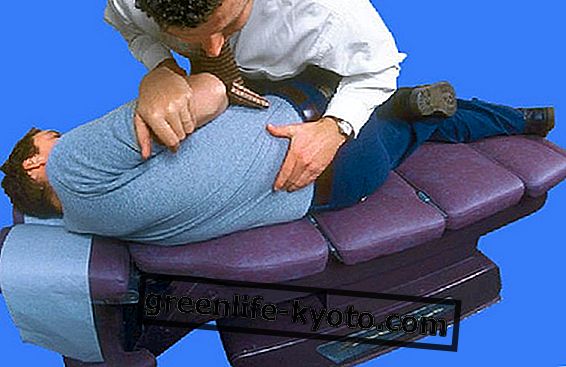
There are ways of feeling good that do not have to do with expenses, botulins, wellness centers from the prohibitive price list. There is a way of feeling good about the person, both the physical body and the interior. It is built day by day and is based on listening to the sensation.
The 5 Tibetans are exercises that start from these basic assumptions. It is then up to the person to develop everything, cultivating that strange and fascinating practice which is to know oneself better .
The 5 Tibetan exercises and the mysterious encounter
We are not in an indefinite time, a gap like those that can be opened in Avalon or in magical places inhabited by fairies like Glastonbury. The era is not so dark, the place not even. We are in India, around the first half of the twentieth century, probably in 1939 . A curious traveler (it seems that his name was Peter Kelder, but to this day this name is wrapped in an aura of mystery) publishes a book entitled: "The five rituals of rejuvenation" .
The book illustrates exercises that Kelder himself declares were transmitted to him by a certain Colonel Bradford, a former officer of the English army who learned the five Tibetans during a period of service provided in India. It seems that the exercises had been transmitted to the colonel directly by the Tibetan monks Lama when, after being fascinated by the stories of the indigenous nomadic population, he decided to go bravely towards the remote Himalayan monastery.
Kelder's book ended in oblivion until 1976, when Christopher Kilham, a yoga teacher, recovered the 5 Tibetan exercises, merged them into practice and teaching and spread them around the world.
The 5 Tibetan exercises and the chakras
The 5 Tibetans are physical exercises that have many features common to various forms of ritual . The ritual dimension is given by the regularity with which they are practiced and by the fact that they belong fully to the total patrimony of Eastern spirituality and to the universe of Yoga.
They are intrinsically linked to the doctrine of the chakras, being exercises that act in the direction of psychophysical integrity, release tension and release stagnation or remove excess energy.
Christopher Kilham in this regard: " The human energy system is a network that extends throughout the body and distributes energy everywhere, also strengthens and revives the mind, keeping the energy substrate on which the organism thrives constant. It is the network through which all vital energy flows ".
The 5 Tibetan exercises make the energy flow through the three main channels known as Ida (lunar force), Pingala (solar force) and Sushumna (central channel); the chakras are placed near the intersection of these three channels.
The 5 Tibetan exercises, know them one by one
We will examine in greater detail and in detail the aspect of every single Tibetan exercise, but let's see them summarily one by one:
- First Tibetan exercise : it consists in rotating on oneself, a little like the rotating Dervishis or Maulawiyah, the Muslim followers of the Mahdi, who rotate on themselves hundreds of times during religious rites. The Lamas, on the other hand, do the vaulting about 12 times in order to stimulate the energy centers sufficiently.
- Second Tibetan exercise : from a supine position the head is lifted and simultaneously the legs upwards and then brought back to the ground, inhaling.
- Third Tibetan exercise : kneeling, hands resting on the buttocks, chin on the chest. Breathing in, they lean back, head, shoulders and back. The mouth is opened by arching, to stretch the front muscles of the neck better, then return forward by exhaling through the nose or mouth.
- Fourth Tibetan exercise : sitting with elongated legs, upright back, hands resting next to the hips, chin against the chest. Inhaling, climb "over the bridge". Return to the ground exhaling. Throughout the exercise the buttocks must be active and the knees close when climbing.
- Fifth Tibetan exercise : Very similar to the yoga position Adho mukha svanasana (Position of the Dog looking backwards or Dog downwards ). We start prone, touching the ground only with hands and toes, in a position suspended with the rest of the body. Breathing in, the pelvis is raised, the legs and arms remain straight so as to form with the body a sort of upside-down V. Go back down without touching the trunk with your head and bringing your head back.
In a low low voice, we reveal to you that there is a sixth exercise that aims at transforming sexual energy into spiritual energy and for this it was practiced by the monks belonging to the communities in which the rule of chastity was in force., where sexual energy is usually conveyed (or dispersed), so that the flow also reaches the upper chakras.













